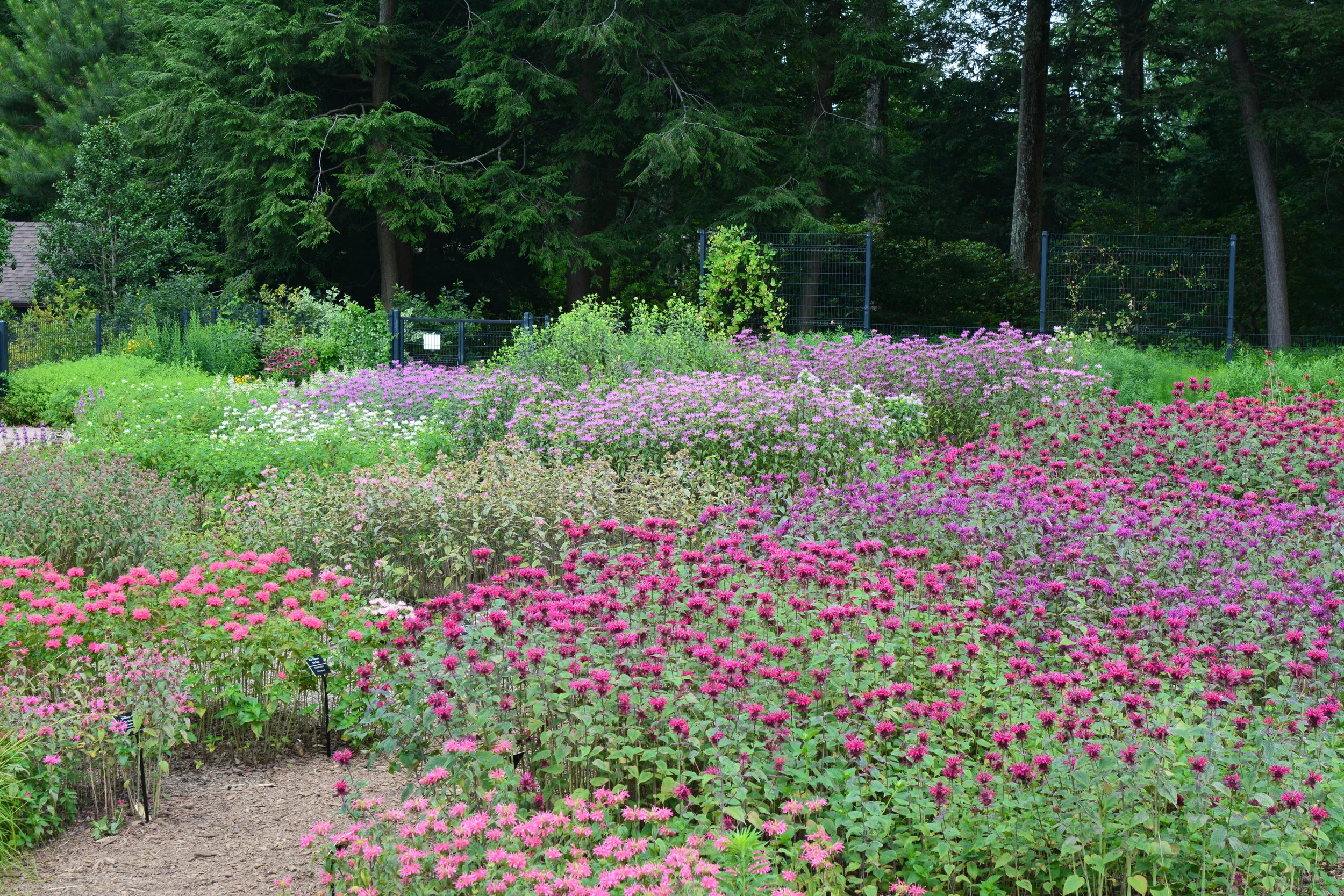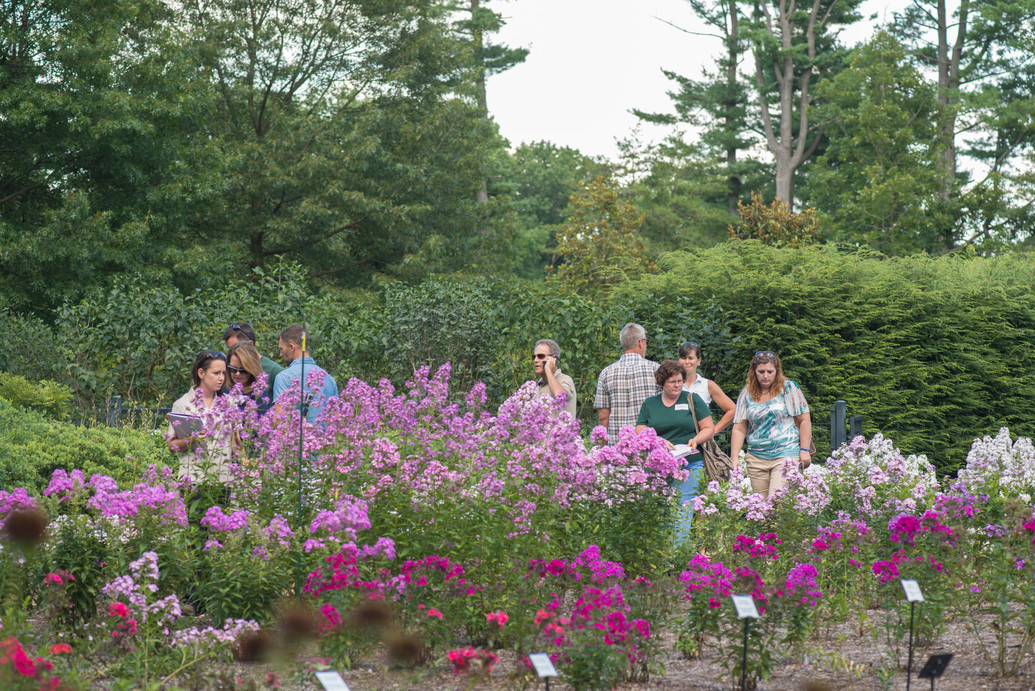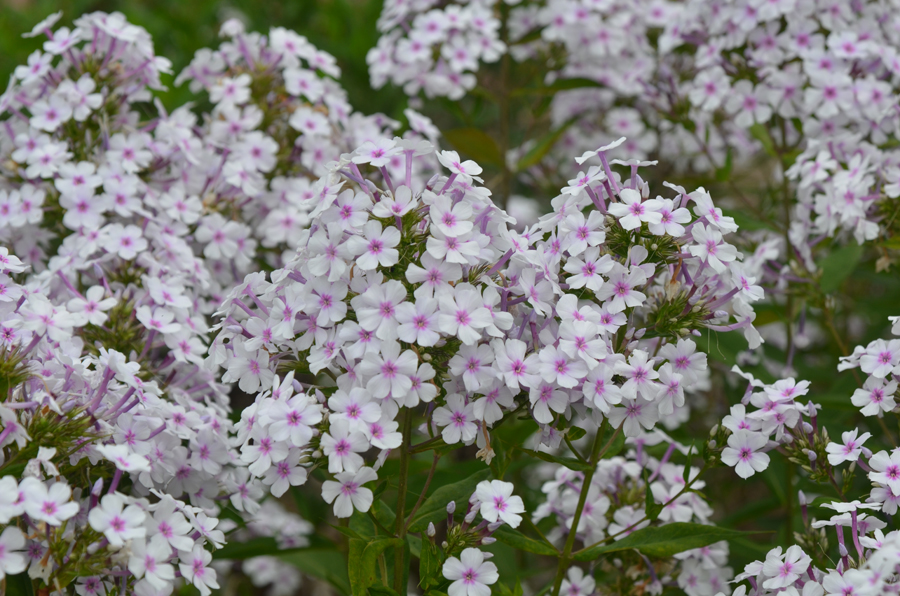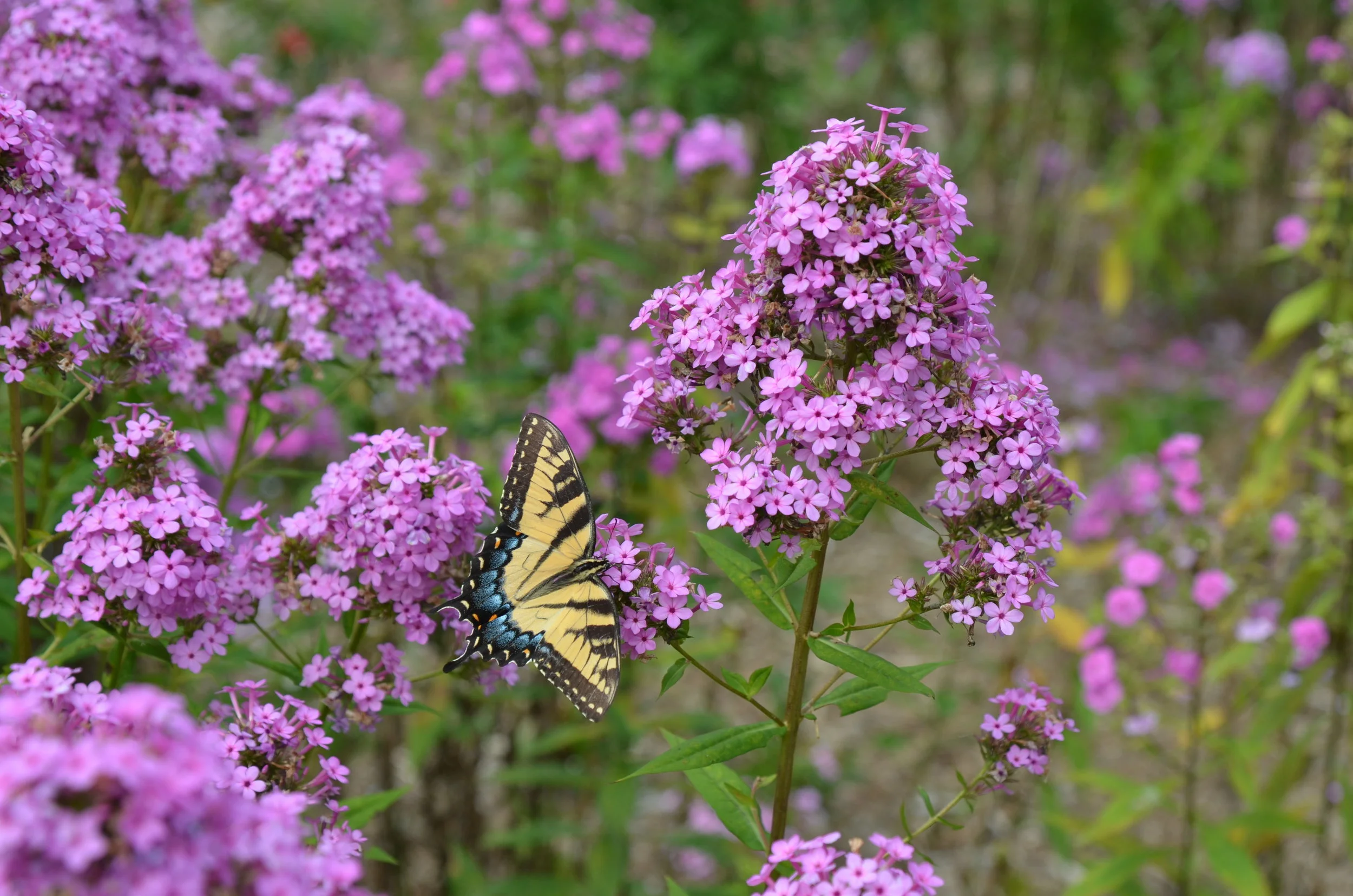By this point, most gardeners will have undoubtedly heard about the importance of using native plants in our landscapes. Though the idea is not new, Doug Tallamy’s landmark publication “Bringing Nature Home” put native plants on the radar for more gardeners than ever. There is no debate that utilizing native plants in our landscapes offers us a chance to bring back some of the biodiversity that was lost when our homes and work places were built. And, at the end of the day, who doesn’t love the sight of a swallowtail butterfly flitting from flower to flower or a pair of warblers nesting in their Viburnum? The rise of native plants in horticulture and landscaping is truly something worth celebrating.
At the same time, however, capitalism is capitalism, and many nurseries are starting to jump on the bandwagon in alarming ways. The rise of native cultivars or “nativars” is troubling to many. Nativars are unique forms, colors, and shapes of our beloved native plants which have been selected and propagated by nurseries and plant breeders. This has led many to denounce the practice of planting nativars as a slap in the face to the concept of native gardening.
Nativars are frequently seen as unnatural mutant versions of their wild counterparts whose use overlooks the whole point of natives in the first place. Take, for instance, the popularity of double flowered nativars. These plants have been selected for an over-production of sepals and petals that can be so dense that they preclude visitation by pollinators. Another example that will be familiar to most are the bright blue hydrangeas that have become to popular. These shrubs have been selected for producing bright, showy flowers that, depending on your soil chemistry, exhibit a stunning blue coloration. The downside here is that all of those flowers are sterile and produce no nectar or pollen for visiting insects.
It would seem that nativars are a slippery slope to yet another sterile landscape incapable of supporting biodiversity. However, anecdotes don’t equal data and that is where places like Mt. Cuba Center come in. Located in northern Delaware, Mt. Cuba is doing something quite amazing for the sake of environmentally friendly landscaping – they are putting plants to the test.
Mt. Cuba has been running trial garden research and experiments on native plants and their nativars for over a decade. The goal of this research is to generate and analyze data in order to help the public make better, more sustainable choices for their yards. Mt. Cuba aims to better understand and quantify the horticultural and ecological value of native plants and related nativars in order to better understand the various ecosystem services these plants provide. In collaboration with academic institutions in the region, popular nativars are established and grown under similar conditions to those experienced in the yards of your average gardener. They are monitored for years to assess their overall health, performance, and ability to support wildlife. Thanks to the help of countless volunteers, these trial gardens paint a holistic picture of each plant and related nativars that is sorely lacking from the gardening lexicon.
This is very exciting research to say the least. The data coming out of the Mt. Cuba trial gardens may both surprise and excite gardeners throughout the mid-Atlantic region of North America. For instance, their latest report looked at some of the most common Phlox varieties on the market. At the top of this list is Garden Phlox (Phlox paniculata). This lovely species is native throughout much of the eastern United States and has become quite a rockstar in the nursery trade. Over 580 cultivars and hybrids have been named to date and no doubt many more will be introduced in the future. Amazingly, many of these Phlox nativars are being developed in the Netherlands. As such, Phlox arriving in regions of the US with vastly different climates often fall victim to novel diseases they never encountered in Europe. What’s more, people often plant these nativars in hopes of attracting butterflies to their garden. Despite their popularity for attracting various lepidopterans, no one has ever tested whether or not the nativars perform as well as their native progenitor.
Phlox paniculata 'Delta Snow'
Starting in 2015, Mt. Cuba began trials on 66 selections and hybrids of Garden Phlox along with 28 other sun-loving types of Phlox. The plants were observed on a regular basis to see which of the nativars experienced the least amount of disease and attracted the most insects. The clear winner of these trails is a nativar known as Phlox paniculata ‘Jeana’. This particular selection was discovered growing along the Harpeth River in Tennessee and is known for having the smallest flowers of any of the Garden Phlox varieties. It also has the reputation for being rather resistant to powdery mildew. Alongside other selections such as Delta Sno’ and David, Jeana really held up to this reputation.
As far as butterflies are concerned, Jeana blew its competition out of the water. Throughout the observation period, Jeana plants received over 530 visits from butterflies whereas the second place selection, Lavelle, received 117. A graduate student at the University of Delaware is studying why exactly the various nativars of Phlox paniculata differ so much in insect visitation. Though they haven’t zeroed in on a single cause at this point, they suggest that the popularity of Jeana might actually have something to do with its small flower size. Perhaps the density of smaller flowers allows butterflies to access more nectar for less effort.
Phlox paniculata ‘Jeana’
Monarda is another genus of North American native plants that has seen an explosion in nativars and hybrids over the last few decades. The popularity of these mints is no surprise to anyone who has spent time around them. Their inflorescence seems to be doing their best impression of a fireworks display, an attribute that isn’t lost on pollinators. These plants are popular with a wide variety of wildlife from solitary bees to voracious hummingbirds. Even after flowering, their seeds provide food for seed-eating birds and many other animals.
As with Garden Phlox, a majority of the commercial selection and hybridization of Monarda occurs in Europe. As a result, resistance to North American plant diseases is not top priority. Many of us have experienced this first hand as our beloved bee balm patch succumbs to aggressive strains of powdery mildew. Though there are many species of Monarda native to North America, most of the plants we encounter are nativars and hybrids of two species – Monarda didyma and Monarda fistulosa.
Monarda fistulosa 'Claire Grace'
Again, Mt. Cuba’s trial gardens put these plants to the test. A total of 40 different Monarda selections were grown, observed, and ranked based on their overall growth and vigor, pollinator attractiveness, and disease resistance. The clear winner of these trials was a naturally-occurring form of M. fistulosa affectionately named ‘Claire Grace.’ Its floral display lasts a total of 3 weeks without waning and managed to attract over 130 visits by butterflies and moths. Though plenty of other insects such as short-tongued bees visited the flowers during the trial period, they are too small to properly access the nectar inside the flower tubes and are therefore not considered effective pollinators.
Another clear winner in terms of pollinators was possibly one of the most stunning Monarda selections in existence – Monarda didyma ‘Jacob Cline’. This tall, red-flowering nativar was a major hit with hummingbirds. During the observation period, Jacob Cline received over 270 visits from these brightly colored birds. Researchers are still trying to figure out why exactly this particular selection was such a hit but they speculate that the large flower size presents ample feeding opportunities for tenacious hummingbirds.
Monarda didyma 'Jacob Cline'
Claire Grace and Jacob Cline also outperformed most of the other selections in terms of disease resistance. Even in the crowded conditions experienced by plants in the trail garden, both selections faired quite well against the dreaded powdery mildew. Though they aren’t completely resistant to it, these and others did not succumb like some selections tend to do. Interestingly enough, most of the other pure species tested in the trial faired quite well against powdery mildew as well. It would appear that Mother Nature better equips these plants than European breeders.
These reports are but two of the many trials that Mt. Cuba has undertaken and there are many, many more on the way. Thanks to the hard work of staff and volunteers, Mt. Cuba is finally putting numbers behind some of our most commonly held assumptions about gardening with native plants and their cultivars. It is impressive to see a place so dedicated to making our landscapes more sustainable and environmentally friendly.







